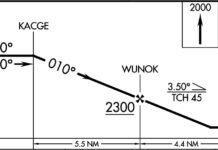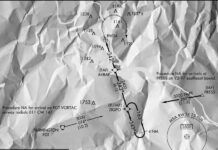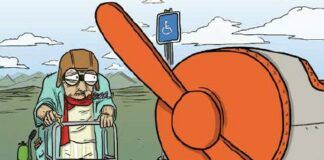I’d heard Stevie Ray recite “The heat, the light, the auto-ignite” during the last two takeoff rolls in the Citation before finally asking him what he was mumbling. Steve was known for cutting sarcasm and a lightning-fast wit; I hesitated to inquire but sensed a piloting technique was in there somewhere.
Steve was surprisingly honest: “I don’t want to miss the pitot heat, the strobes, or the ignition switches when we get our clearance to roll, that’s all.”
“But Steve,” I asked, “we did the checklist and besides, there are no igniters on this bird, right?”
“Maybe not, but our Gulfstream has ’em and I’m not changing my habits.” Stunned, all I could do was thoughtfully nod.
Back then I would have dismissed Steve’s practice as feeble, but experience has brought an understanding that we pilots are the weakest link on the airplane—it only takes one bad day to prove it. Good day or bad, there are a number of steps that must be accomplished and it may come down to ritual or habit to see that the job gets done.
Method Mix
When aviation was in its infancy, human factors wasn’t yet a spark in the industry’s mind and there were no checklists. I’ll bet the early pilots who did well were the ones who built routine habit patterns. Those might have been something like the “CIGAR-TIP” (see sidebar) that contains all the essential nuggets to safely set up most any airplane for takeoff.
I’d wager the next stop in checklist evolution was the flow pattern. The airline community seems to be the largest proponent of flows and any number of airline jocks can be seen drawing imaginary lines, circles or boxes as their fingers sweep around the various cockpit panels, stopping to adjust errant switches along the way. Once the flow is done, they reference the paper checklist to ensure nothing was missed.
This leads to the “do-list.” Here it’s strict challenge and response. I say, “Aux pump,” you flip the switch, and reply “On.” The military has a fondness for do-lists and, admittedly, they are the most thorough and least prone to mistake when run by two people.
Don’t Do-List It
The principal pitfall occurs when single-pilots are taught to use do-lists. It’s too easy to get sidetracked by a radio call, heading change or other cockpit need, and the sheer time inefficiency of do-lists makes just skipping them too tempting. I cringe when I recall my first lessons on flying when it comes to checklist usage. The Cessna 150 became one big do-list and, for a single pilot, nothing’s worse.
The preflight walk-around was actually a flow: Start here, go there, walk clockwise, return to where you started. I didn’t carry a checklist and wasn’t required to reference one after the walk-around. Mistake one.
Once settled in the cockpit, it was pure do-list. “Primer … In and locked.” Uh, let’s see, yup, it is in and locked. “Carb Heat … Cold.” Uh, let’s see, yup, it is. Then my CFI would interrupt, “How ’bout that altimeter, Sport?” Whoops, there was mistake two and we hadn’t even cranked yet.
Contrast this with my current pre-start cockpit check in my RV-8. Here’s the flow: Begin along the left console, work across the panel and finish by coming down the radio stack and right console. Pointing and touching along the way is, in fact, good human factors technique. Because the arrangement is in symmetric columns, following the shape formed by those panels ensures nothing is missed.
I then validate the flow with a paper checklist—which takes discipline. The tendency is to blow it off, but using a paper follow-up is a great deal quicker when you don’t have to look away. Its only purpose is to highlight a missed step.
What about procedures such as Before Takeoff that don’t lend themselves to an uninterrupted flow? Execute the steps as best you can then perform a back-up. As I mentioned, in the RV, I read the full checklist but I’ll always recite a “Can I Get Frisky.” I never launch without some sort of double-check. Snicker if you want, but in over 10,000 hours of flying, I’ve missed my share of stuff when I didn’t double-check.
A System You Can Use
Many GA pilots admit that their flying consists of a do-list on the ground and no checklist in flight. Instructing “use your checklist” won’t cut it, so my first suggestion is to create a checklist you will use. Take your official checklist and customize it on your computer.
Step one is to rehash the organization to meet your favorite system. I put items in an order that matches up with my flow. If you like a CIGAR check, then you can group items to match. So the “I” for instruments is expanded on the checklist to include altimeter, attitude, heading and so on. When you do the “I” step, you set them from memory. When you read the “I” step, you catch any you might have missed.
Then add items that the manufacturer omitted, cut the ones that don’t apply to you, change the font and tweak as needed. I put an asterisk next to safety items I can’t afford to miss: “Clock—SET” seems less threatening to me than *Canopy—LOCKED.” Likewise, if it’s something you frequently overlook, repeat it. Some airlines check flap settings on both the taxi and before takeoff checks for just this reason. Have the new checklist bound at an office supply store or laminated and secured to the panel; whatever suits your taste.
I actually wrote two checklists for my RV-8: a detailed version for night/IFR and an abbreviated one that I only use for VFR locals. Deep down, I knew the Full Monty was too cumbersome for simple flights, so I created an alternative.
The final challenge is in actually accomplishing your checks. The best technique is to use trigger cues. Think of routine events, such as the first power reduction on climbout, level-off, initial descent, entering the pattern and clearing the runway. Each time this occurs, it’s a cue to accomplish a check. I’m not saying that you need a checklist at each of these moments. Rather you should examine your flying and decide which checks are appropriate and when.
The Take Away
Human nature craves simple solutions. Brief, easy-to-read checks posted on the panel are more likely observed than sticky, heat-curled pages lost in a seat-back. Flows get the critical work done and mean any referenced checklist can be done faster with less chance of interruption. The best checklists aren’t the most thorough; they are the ones you actually do.
Regardless of the checklist type your airplane or company calls for, employ a double-check to ensure nothing gets missed. This brings our discussion full circle, oddly enough, to the techniques used by pilots before there were checklists. Accomplish the required checklist, but use crutches to act as dams to stop a potential flow of mistakes. The method is up to you: A flow can follow a do-list, a paper list can back up a flow, or a trigger phrase can verify any of them. Remember that emergencies can cause entire checklists to be skipped. The habit of a crutch may be what saves the day.
I once complimented Stevie Ray on how he handled the Citation and he replied in his typical to-the-point manner, “If it were easy, then everyone’d be doing it.” He wasn’t boasting. Actually, it was his way to say that one of the obstacles we pilots face is to make flying appear easy to an observer. Accomplishing checklists along the way is just part of the game.
Ken Holston is a 767 F/O for a major airline and an Air Force Reserve C-130 Evaluator Pilot.




